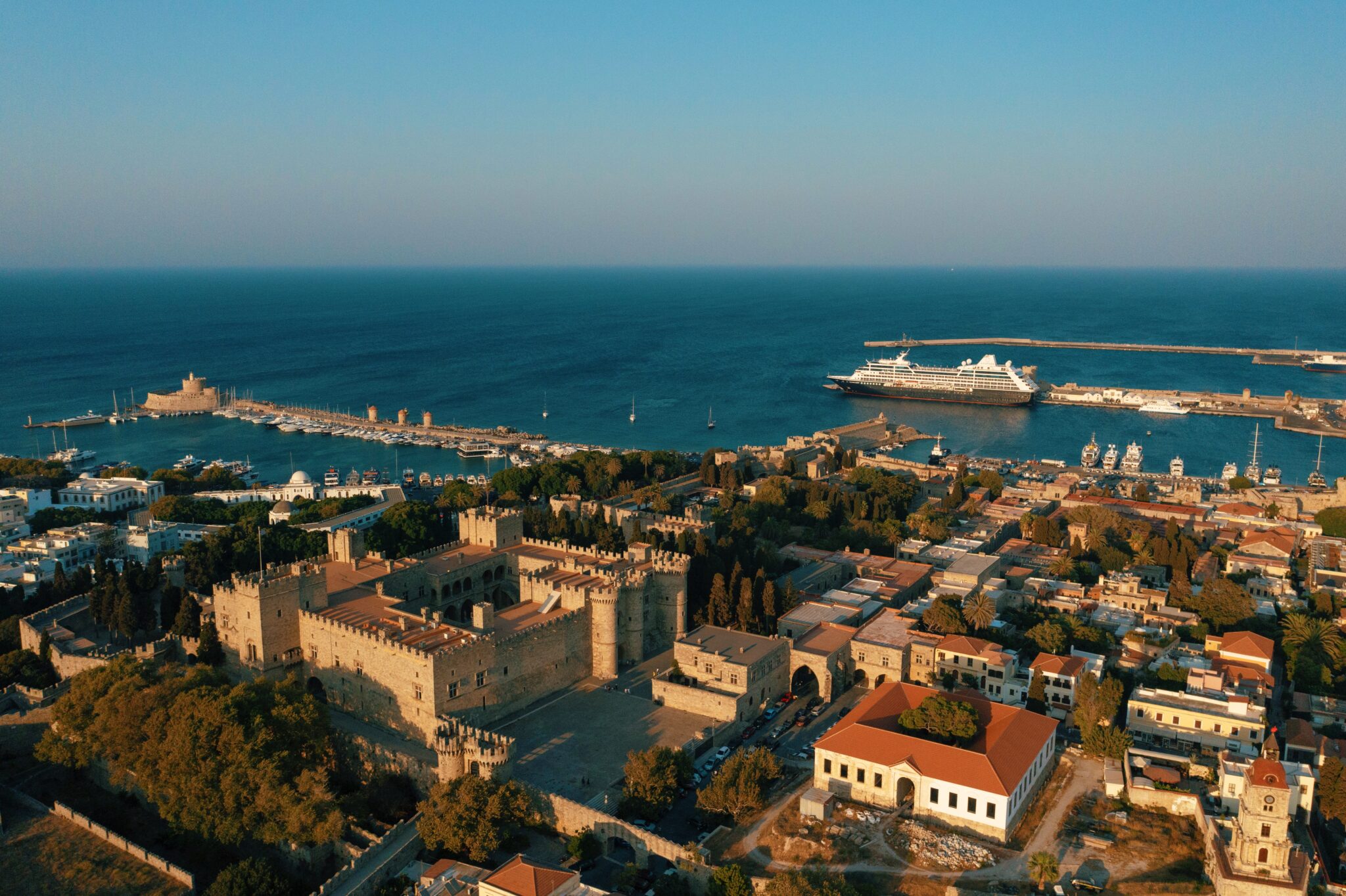Often the most fascinating places to visit in nature are alluring precisely because they are locations of conflict and turbulence. We are drawn to the boundaries between sea and land, between plains and mountains, between earth and sky. The contrasts we perceive at these spots help us to experience each aspect more intensely. And this is equally true of cultural tourism. Think of the wonders of Sicily, which, because of its location, has been buffeted over the centuries by a stream of oppressors/colonizers/liberators–the Greeks, the Romans, the Normans, the Spanish, the Germans, the Allies. Or consider the beautiful city of Strasbourg in Alsace, which abounds in monuments and stories precisely because it has lived at the boundary between Catholic and Protestant, between France and Germany. Borderlands are eventful places, although those events can be dire.
One of the great borderlands of human history lies along the eastern coast of the Adriatic Sea. For thousands of years, this liminal terrain has seen struggles for primacy between the Greeks and the Romans, between the Catholic and Eastern Orthodox churches, between Christianity and Islam, between Nazi invaders and local partisans. And in the 1990s the region saw brutal conflict as the former nation of Yugoslavia split into a handful of independent nations.

The coastline there is dotted with exquisite walled cities, beckoning islands, beautiful beaches, and a bounty of local crops and culinary traditions. So when Worth received an invitation to sail aboard one of the Azamara line’s luxury cruise ships along the Adriatic coast, off I went.
Just as the world is divided into skiers and non-skiers, there are people who cruise and people who don’t. For a long time, I was one of those who didn’t. I had formed my impression largely from ads promoting short sails out of New York, on what looked like floating versions of Las Vegas. For plenty of folks, that’s great–it’s just not for me. But what Azamara was promising was different–the tour was called the “Croatia Intensive Voyage,” and it promised an immersive encounter with the cultural and natural attractions in and around six Adriatic port cities–Koper, in Slovenia; Zadar, Split, Korcula, and Dubrovnik, all in Croatia, and Kotor, in Montenegro. The ship, the Azamara Quest, would embark from the port of Ravenna, in Italy, and finish at Piraeus, the port city for Athens. The voyage richly delivered on its promise.
Ideally, a cruise is undertaken with a companion, but since my wife had other obligations, my companion was a book–Black Lamb, Grey Falcon, by the British novelist and journalist Rebecca West, who explored what was then Yugoslavia in the late 1930s. West constantly examines the links between the area’s past and present, and probes the burdens and consolations of history. And I was happy to discover through my own travels that right now is a hopeful time of nation-building and pride in accomplishment in these recently established countries.

Nowhere was this more evident than at our first port of call, Koper, Slovenia, just a bit south of the Italian city of Trieste. And it was no ordinary port visit–all four ships in the Azamara fleet sailed majestically into Koper a bit after sunrise, in a gesture of friendship and collaboration which had been years in the planning. Koper’s mayor and officials of the port and of the nation welcomed the captains of the vessels; gifts and pledges of amity and ongoing collaboration were exchanged. What set this apart from the usual tone of such events was the incandescent pride that the Slovenians take in their nation–its history, its natural beauty, and its hopes for the future. This pride was palpable–everywhere public spaces were well maintained, curbs swept and paint freshened, and the people eager to share their favorite aspects of their nation.
After the welcome ceremony, held in Koper’s Praetorian Palace, our press group was scheduled for an excursion to see nearby towns and villages, and sample the products of local agriculture. We proceeded by bus to Piran, a spectacular small port city with a pronounced Venetian influence. The main piazza in Piran is dominated by a large statue of the town’s famous son Giuseppe Tartini, a Baroque violinist and composer.
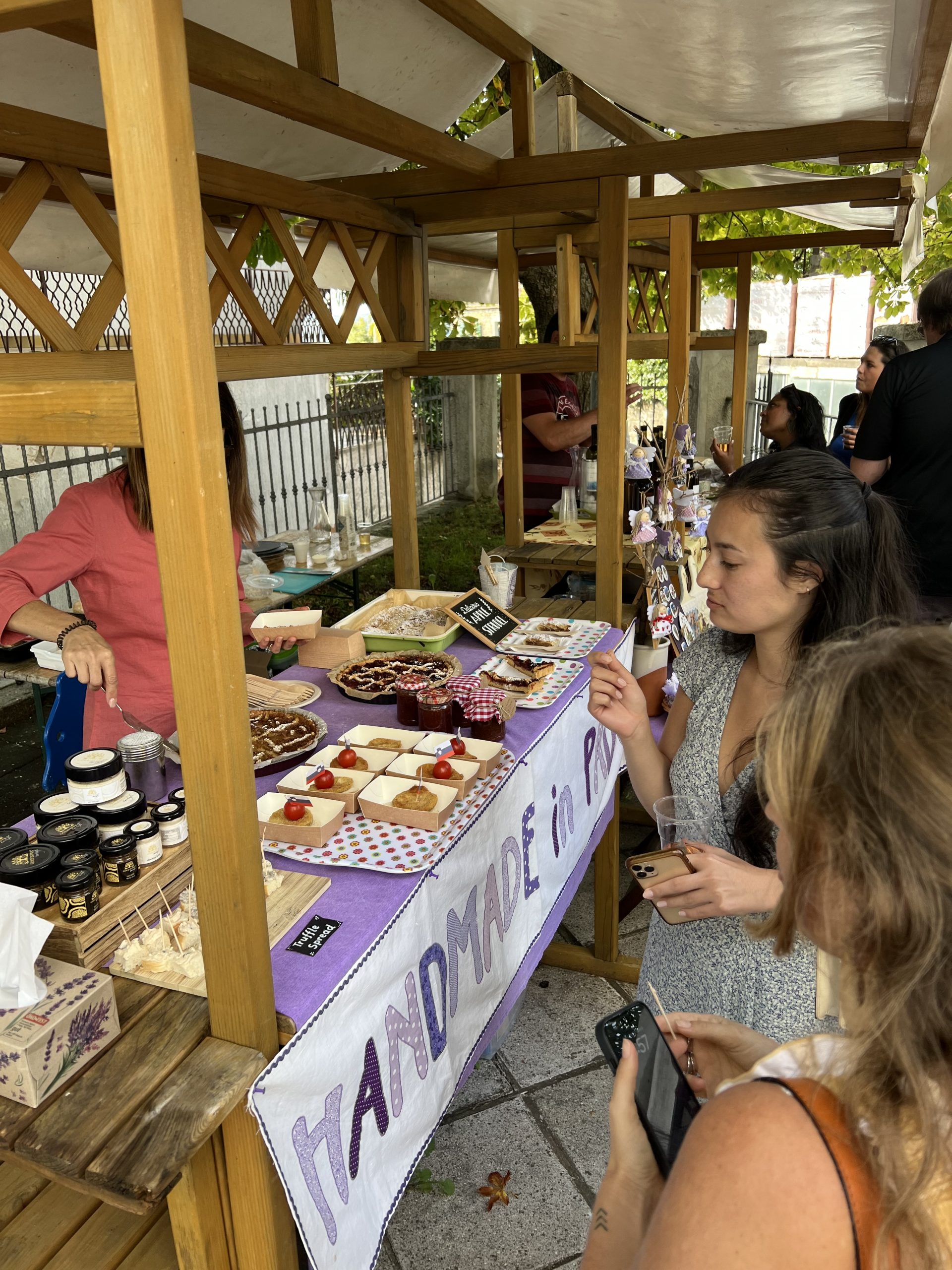
From Piran we rode through olive groves where the harvest was under way and past groves of persimmon trees. The bus climbed to Padna, a lovely stone hamlet set among rolling hills dotted with vineyards and fields. (The twisty road up left one slack-jawed in admiration of the bus driver’s skills. The roads we encountered throughout the trip were all beautifully designed and maintained, but they are narrow, two-lane–at-best affairs. The act of passing another vehicle puts one in that tremulous realm between calculation and prayer.) A small farmer’s market in Padna offered a sampling of the local bounty–two kinds of truffle paste, prosciutto being carved from the bone, wine and grappa, jams, bread and fruit tarts. We were already well fed when, on the way back to Koper, we learned that the city was holding its annual harvest fair, and our last stop was to be the fairgrounds: there, prize cattle and goats were on display, as well as local cheeses, sausages, wines, and a vast variety of one of Slovenia’s proudest agricultural products–honey.
Arriving back onboard the Azamara Quest with appetite sated by an afternoon of Slovenian delicacies was, to be frank, an error. Food and drink are included in the price of passage, as are an assortment of wines and liquors, and premium wines and spirits are available for a surcharge. There is a broad choice of options for dining, both within each restaurant and across the variety of eating spots. These range from a sparkling cafeteria line in the airy Windows Cafe to more formal options like the Discoveries restaurant (think elegant old-school hotel), Aqualina (a modern fine-dining venue), and Prime C (an ambitious steakhouse). Wherever you dine, food is plentiful and service unfailingly attentive and enthusiastic. If you are planning on dieting on your cruise, bring plenty of willpower.
Fortunately, exercise is easy to find, either in the onboard gym, pool, or track or more interestingly on many of the excursions. At our second port of call–the city of Zadar, in Croatia, the nine excursions on offer included some rated “strenuous”—a bicycle tour of Zadar, or hiking in the nearby Krka National Park–and others rated “moderate” such as a tour of nearby Pag Island, including a visit to its historic lace factories. The excursion I went on that day promised a visit to “Royal Vineyards & Nin Salt Plains.”
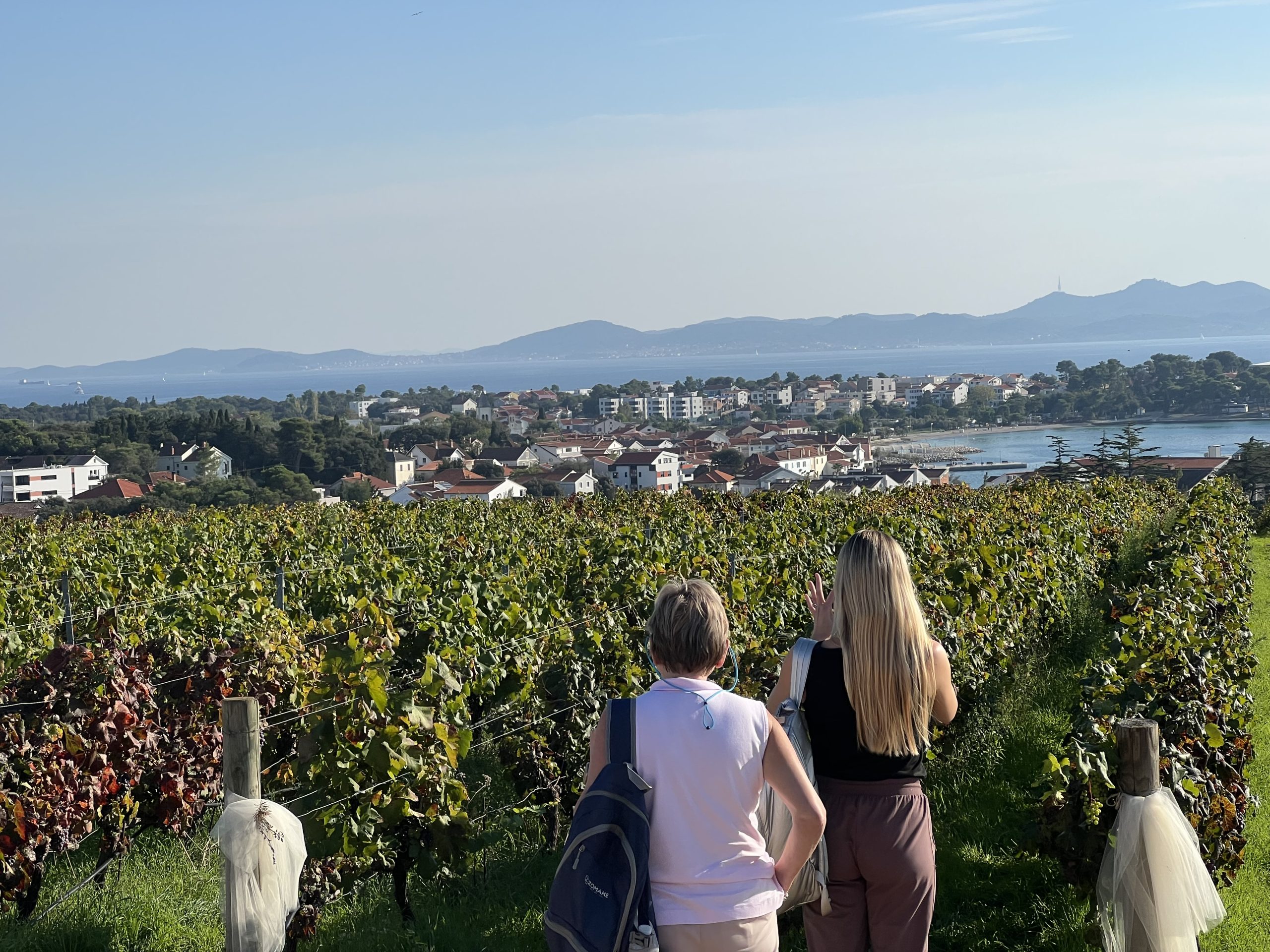
Now it may seem that a visit to a salt works is not entirely consistent with one’s image of luxury travel. But, as it turned out, the salt works near Zadar were a fascinating site. Important since Roman times as a source of that precious commodity in an age before refrigeration–salt was then so valuable that Roman soldiers used to receive some of their pay in salt, which was easily traded for other goods. Our word “salary” is derived from the Latin word for salt. The salt works had a small but well-designed museum, and the gift shop proved a surprising hit among the excursion’s participants. The Royal Vineyards were situated not far away on gently rolling hills with lovely views over the Adriatic, where we were offered tastes of three wines produced on-site and more local meats and cheeses. The excursion ended in the town of Zadar, which features ruins of the Roman forum.
The next port of call was Split, Croatia. Again, an array of possible excursions beckoned, including a 12-hour tour of “Bosnia-Herzegovina’s Mystical Places,” forays to nearby towns and parks, and a “Croatian Cooking Experience,” where a local chef helps visitors “learn to cook in the Dalmatian style.” The more adventurous could choose whitewater rafting on the Cetina River.
Appealing as some of these sounded, I had decided to devote my day to the city of Split, smitten by Rebecca West’s description. I knew that the heart of Split had grown up in the remains of the vast palace built around 300 A.D. by the Roman emperor Diocletian for his retirement. As West tells it, the barbarian invasions a few centuries later drove most of the population into exile on neighboring islands: “In time they crept back to the mainland, and found nothing more habitable than the ruins of Diocletian’s palace. . . . [And now] the palace and the fugitives have established a perfect case of symbiosis. It has housed them, they are now its props.” About a century ago Split’s town planners explored the idea of removing the accretions and restoring the palace to something resembling its original state, only to discover that the add-ons had become essential to the survival of the entire structure. And how magnificent the result is–a kind of architectural analog to a great coral reef, with many ages of stone edifices harmoniously coexisting.
It is hardly an undiscovered spot–some of the ancient stones near the former tomb of Diocletian are covered in cushions and menus by an enterprising cafe; an adjacent columned entranceway is occasionally paraded through by actors dressed as Roman centurions, and an acoustically welcoming alcove nearby is regularly graced by the sounds of a male a capella group, hawking their CDs. But the singers are good, the centurions disperse, and the magic of the spot, presided over by the monument Diocletian built to and for himself, is secure.
After a delicious lunch of seafood risotto and a nicely chilled glass of local sparkling wine at a quayside restaurant, I returned to the ship to get some work done. But I found myself returning to walk the streets and alleys of Split again later that afternoon, wanting to see it all again in a different light. I made a second stop at the great Temple of Jupiter (part of Diocletian’s palace) to admire its coffered barrel-vault ceiling. This time I walked behind the temple, and its rear facade seemed so unchanged that it was easy to picture oneself walking along in the fourth century on one’s way to pay respects to the king of gods. Around the sixth century, it was repurposed to honor John the Baptist, and a modern bronze statue of him stands, somewhat uncomfortably, in the temple today.
With a silent hymn of thanks to Rebecca West for helping guide my steps around Split, I returned to the Quest in time for our departure for the small walled town of Korcula, said to be the birthplace of Marco Polo. That port was too small to dock at, so we went ashore in the ship’s tenders. A walled city as perfectly preserved as Korcula draws many visitors, so its cobbled streets climb up and down past restaurants, cafes, jewelry stores, and souvenir shops. And of course, places that are heavily visited by tourists are that way for a reason, and the sights of Korcula, though finite, are superb.
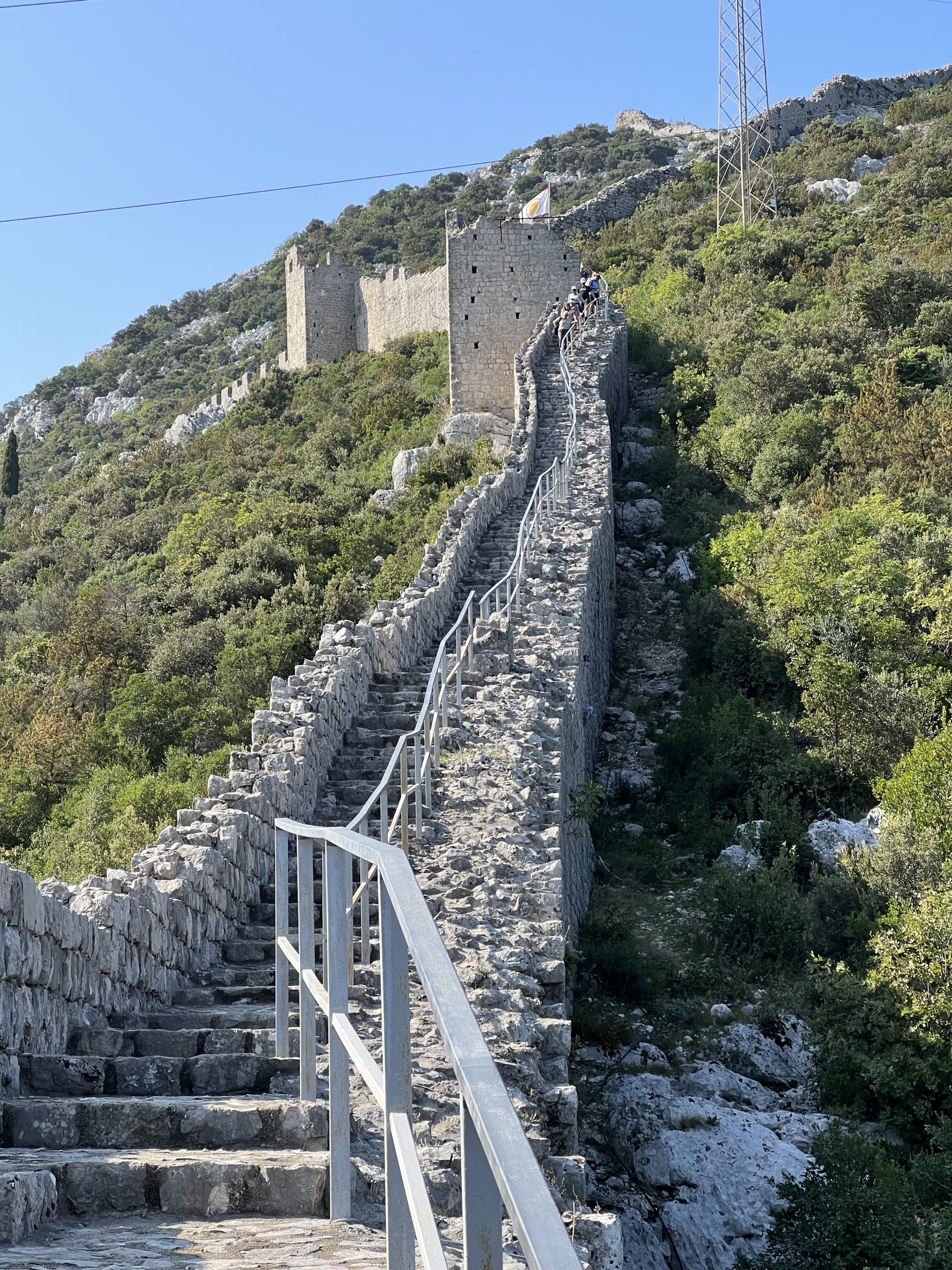
Our next port of call was Dubrovnik. That great city, which stood for centuries as a fortified bastion of Christendom against the Ottoman empire (while also resisting attempts by the Venetian fleet to subject the region to Venice) is now–if the evidence of souvenir shops and hawkers is to be believed–mostly visited by fans of “Game of Thrones,” which has used various local sites as locations for the show’s bloody machinations. And for some GOT fanboys, that is the main, if not the only, reason to visit Dubrovnik. But there is much more to Dubrovnik than a location for King’s Landing–and, sadly, there are no dragons. The Azamara excursions, thankfully, aim higher. I signed up for a “strenuous” excursion named “Hike Ston Walls & Oyster Experience.” Ston is a planned city from the first half of the fourteenth century, protected against the region’s many enemies by a great stone wall whose remains are about four miles long. After so many good meals on board and in ports, I was afraid that I was putting on a later-in-life version of the “freshman fifteen,” and thought a strenuous walk would do me good. As we gazed up the sinuously winding path of the ever-ascending walls, the guide noted that the walk would take about two hours, and involved “more than 1,000 steps.” And after a while, that estimate seemed low. The group prevailed, though, in only 90 minutes, and along the way had ravishing views of the neatly laid-out town and the surrounding area. After restoring ourselves with beverages at a local cafe, we went on to the “Oyster Experience.” This involved boarding a boat equipped with benches and tables for about 20 passengers and cruising through calm, brackish waters to a local oyster and mussel farm. The head oysterman explained the process of raising and harvesting the oysters, and then we were treated to the freshest of oysters and to mussels bouzara–cooked in white wine, garlic, and olive oil–all washed down with some local wine.
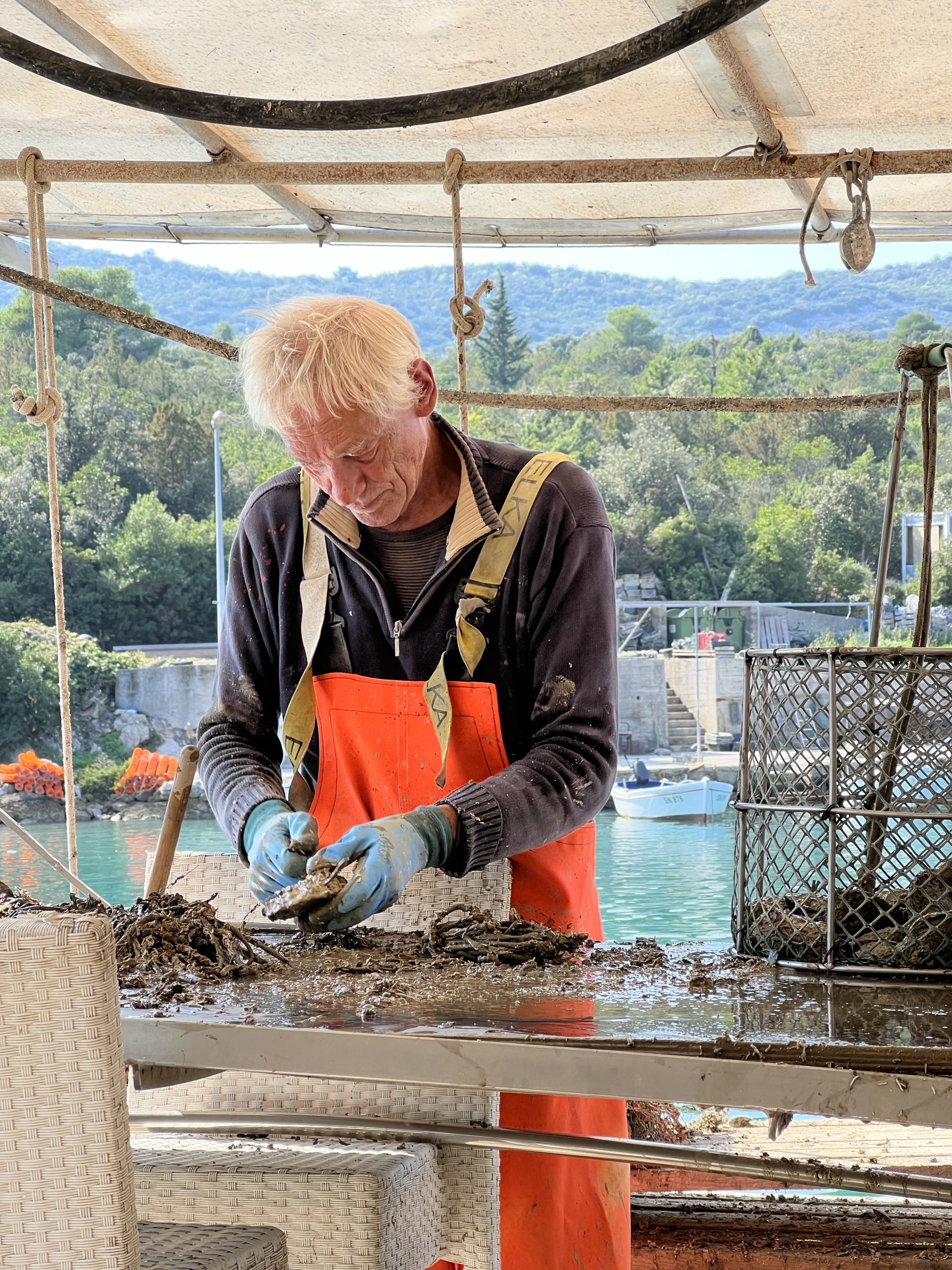
What is lovely about the immersive approach that Azamara takes is that, with no effort on one’s own part (other than perhaps some hiking), you end up learning a lot about the place. The oysterman, it turned out, recently learned that an ancestor had been plying the oyster trade there back in the sixteenth century. It happened this way: the harvesting of salt was such an important part of the government revenues that all able-bodied men (and likely many women) were pressed into service at peak times in the summer when the salt is harvested. But the oyster trade was also vital, so those engaged in it were granted an exemption, and a local historian doing research had found the name of this oysterman’s relative on a list of those exempt one year. Not earth-shaking, perhaps, but it tied a neat knot binding together the present and the distant past. Plus, the oysters were great.
Wonderful as the excursion was, it left little time to explore Dubrovnik, so I saw what I could and pledged to return another time. And that’s the thing about Azamara’s “intensive” cruises, by going deep on one or two aspects of a location, you must skip others. It’s easy to feel constantly challenged to make the right choice, until you realize there’s really no wrong choice. I would have loved to see more of Dubrovnik, but I wouldn’t want to lose the experience of hiking the walls of Ston and eating oysters just plucked from the brine. Since each port of call has multiple excursions–as well as the choice of simply walking the port you are in–you could make the same cruise several times and have a different experience in each port. And I am sure there are travelers who do it.
Cruises come in many forms and attract different audiences. With this “Croatia Intensive” journey, Azamara was clearly aiming at an audience interested in cultural immersion, and they hit their target. Not every cruise ship would try a night of opera on deck for its guests, but the Azamara Quest welcomed aboard two accomplished Italian singers who performed well-loved arias to a largely attentive audience. On board, there are singers, dancers, and musicians who ensure that each night has entertainment to suit a variety of tastes. The other passengers I spoke with, who ranged from veteran cruisers to first-timers, were uniformly delighted with their experiences.
The Quest is, for a cruise ship, quite small. There were just under 600 passengers aboard–today’s largest ships can carry more than ten times as many. These Azamara ships can dock at smaller ports; and at ports where one has to take a tender to a dock, the process is quick and efficient. Coordinating the movement of passengers, luggage, supplies, and crew must be dauntingly complex, but I always felt like a guest, not a piece of cargo. And that must be an art in itself.
After Dubrovnik, we had one more stop in the Adriatic, the port of Kotor, in Montenegro. Having felt that I missed a lot of Dubrovnik on my excursion, I skipped a planned boat ride in Kotor’s Boka Bay and devoted myself to the city itself. Kotor is ringed by impressive walls, and on the hills above a fort stands guard–this time I spared myself the climb, and wandered the town’s streets and alleys. But now the cruise was winding to a close, with a “sea day” as we headed southeast past Albania and down the Greek coast to make our final port call at Piraeus, where we would debark (and I would board a flight home from Athens).
That sea day was crammed with on-ship activities for those who wanted them: meditation, yoga, spin class, Pilates; themed trivia on topics such as James Bond, mythology, and the Beatles; health-related discussions of acupuncture, “How to burn fat faster,” and detox for weight loss; a lecture on Athens’ golden age; and a wealth of musical offerings, wrapped up at 11 p.m. with a farewell party hosted by the resident DJ.
A few hours later, sitting in the Athens airport, I found myself disoriented by the lack of gentle movement–I had become accustomed to the subtle movements of the sea (we had been favored with nearly perfect weather). I started to see how just as one became accustomed to the motion of the ship underway, you could easily become a habitue of cruises. If you are going with small children, you might want a large ship with water slides and activities for kids. But for a culturally rich destination like the great cities we visited, a small ship is a natural choice, one consistent with the very essence of these ports. And I was bowled over by the way the Azamara folks offer a wealth of shoreside activities that bring you, in surprisingly successful ways, into contact with the people and the cultures of these venerable destinations.
Traveling aboard the Azamara Quest, I crossed many boundaries–between sea and land, coast and uplands, country and city, and past and present. Because of the intensive nature of the experience, you don’t come away with a sort of “bucket list” feeling of “O.K., seen that.” In fact, the desire to return and see more is the main souvenir I found in my suitcase when I returned home.
The cost of the 8-night cruise, in a Veranda Stateroom, was about $5,200 (per person, double occupancy), not including airfare. Less expensive options are available, as are larger suites, which can go as high as nearly $19,000 for this cruise and include such amenities as butler service in the suite, in-room afternoon tea, and priority embarkation and disembarkation. Standard meals, wines, and spirits are included in the price; more premium choices come at an additional charge.
Azamara ships sail to locations all across the globe, and extensive information and prices for future cruises can be found here.

